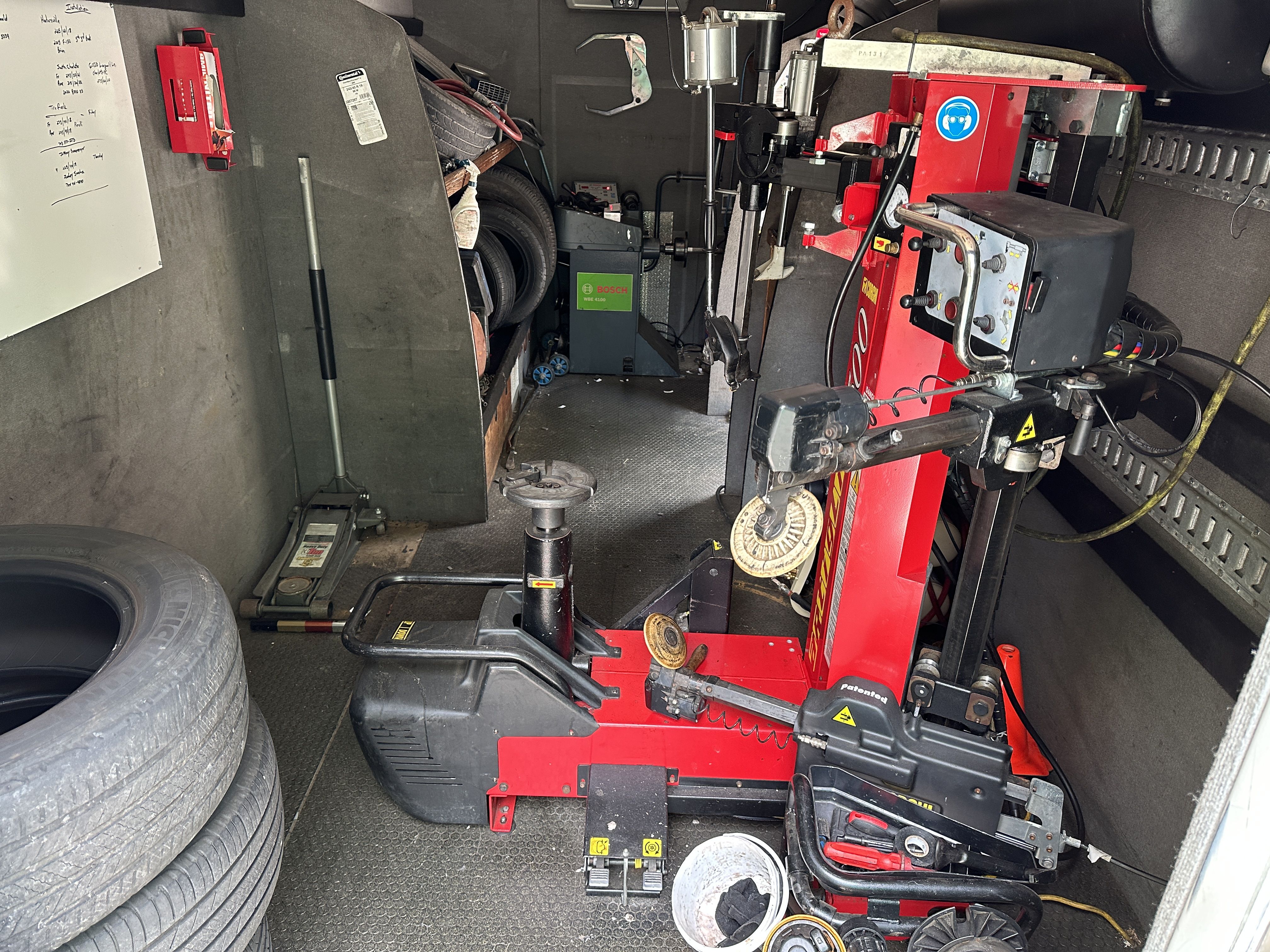Tire Solution: Proven Methods for Ideal Tire Upkeep and Care
Preserving optimum tire condition is extremely important for both safety and efficiency of any automobile. From ensuring appropriate tire pressure to normal rotation and positioning, there are tried and tested approaches that can dramatically prolong the life-span of your tires and boost general driving experience. As we explore the intricacies of tire care and upkeep, we will certainly discover essential standards that every car proprietor must follow for the very best feasible results. Allow's dig right into the world of tire service and discover the secrets to maintaining your tires in top-notch form for the long haul.
Significance of Tire Pressure
Appropriate tire pressure is a critical consider ensuring ideal vehicle performance and safety and security on the roadway. Keeping the advised tire pressure levels given by the manufacturer uses countless benefits. To start with, ample tire stress advertises far better fuel performance, as under-inflated tires can lead to increased rolling resistance, causing the engine to function tougher and eat more fuel. Right tire stress makes sure also step wear, enhancing tire long life and saving money in the long run by delaying the demand for premature substitutes. Furthermore, correctly inflated tires add to boosted handling and braking capacities, critical for safe driving in various roadway conditions. Over-inflated tires, on the various other hand, can cause lowered traction and a harsher ride. Alternatively, under-inflated tires are susceptible to getting too hot, which can result in mishaps and blowouts. Frequently examining and adjusting tire stress, specifically previously lengthy trips, is a straightforward yet efficient method to boost lorry efficiency, extend tire life expectancy, and prioritize safety and security when driving.
Tire Rotation Guidelines
When considering tire rotation guidelines, it is important to comprehend the significance of this upkeep task in making best use of tire life-span and preserving ideal vehicle efficiency. Tire turning entails transforming the setting of each tire on an automobile to make sure even tread wear. Front tires tend to put on more quickly than back tires as a result of steering forces, making normal turning vital for balanced wear patterns. The advised rotation pattern differs depending upon whether a vehicle is front-wheel, rear-wheel, all-wheel, or 4x4. Usually, tires ought to be turned every 5,000 to 7,500 miles, or as advised in the car manual. Disregarding tire rotation can bring about uneven wear, influencing handling, traction, and potentially compromising automobile safety and security. By adhering to proper turning standards, drivers can expand the life of their tires, enhance gas performance, and boost general driving experience. Normal rotation is a simple yet effective maintenance technique that contributes dramatically to tire durability and vehicle efficiency.

Advantages of Wheel Alignment
Ensuring correct wheel placement after tire rotation is important for keeping well balanced wear patterns and maximizing lorry efficiency. Wheel alignment describes the adjustment of the angles of the wheels to the supplier's specs. Among the crucial advantages of wheel positioning is improved guiding and taking care of reaction. When the wheels are properly lined up, it reduces steering initiative, ensuring a smoother and extra controlled driving experience. Furthermore, correct wheel positioning aids to prolong the lifespan of your tires. Misaligned wheels can create irregular tire wear, causing early tire replacement and boosted upkeep prices.

Tire Tread Deepness Inspect
Performing a normal inspection of tire tread deepness is important for preserving safe driving conditions and prolonging the lifespan of your tires. The walk on your tires plays an essential function in giving grip, specifically in wet or unsafe conditions. To inspect your tire tread depth, you can utilize a step deepness gauge or the dime examination. The recommended walk deepness is at least 2/32 of an inch. It is time to change your tires to ensure optimal performance and safety on the road if the step depth is listed below this limit. Irregular tread wear can indicate problems with tire suspension, pressure, or alignment, highlighting the importance of normal step deepness checks. Disregarding to monitor and preserve correct step deepness can cause minimized hold, longer braking ranges, and a boosted danger of hydroplaning. By click now integrating tire walk deepness check out your regular upkeep routine, you can drive with confidence knowing that your tires remain in top condition.
Seasonal Tire Evaluation
Seasonal tire assessment is an essential element of tire maintenance that ensures tires are all set to encounter the difficulties positioned by different weather problems. In preparation for winter months, it is important to inspect the tire pressure routinely as cold temperature levels can trigger tire pressure to go down. By carrying out regular seasonal tire assessments, chauffeurs can prolong tire life-span, improve fuel efficiency, and most notably, make sure a protected driving experience in differing weather condition problems.
Conclusion
Finally, preserving proper tire stress, rotating tires consistently, lining up wheels properly, keeping track of step depth, and performing seasonal inspections are important techniques for optimal tire treatment. By adhering to these shown approaches, vehicle drivers can guarantee their tires last much longer, do far better, and contribute to total lorry security. It is necessary to focus on tire upkeep to avoid accidents, enhance gas efficiency, and extend the lifespan of tires.
Sufficient tire pressure advertises better fuel performance, as under-inflated tires can lead to increased rolling resistance, triggering the engine to work harder and take in even more gas.When considering tire rotation standards, it is crucial to comprehend the relevance of this maintenance task in maximizing tire lifespan and preserving optimal lorry efficiency. Seasonal tire inspection is an essential element of tire upkeep that guarantees tires are prepared to encounter the challenges positioned by different weather condition conditions. By carrying out regular seasonal tire inspections, chauffeurs can extend tire life expectancy, improve fuel performance, and most importantly, ensure a safe and secure driving experience in differing climate problems.
In verdict, maintaining correct tire stress, turning tires consistently, straightening wheels appropriately, checking step deepness, our website and performing seasonal examinations are crucial techniques for ideal tire care.